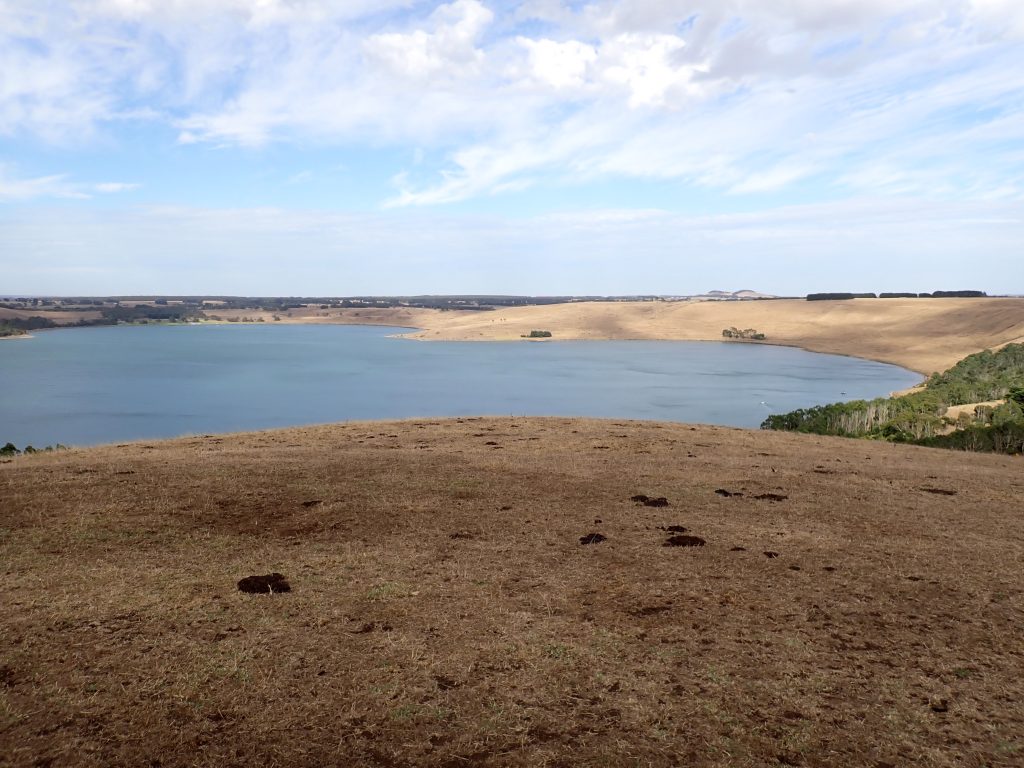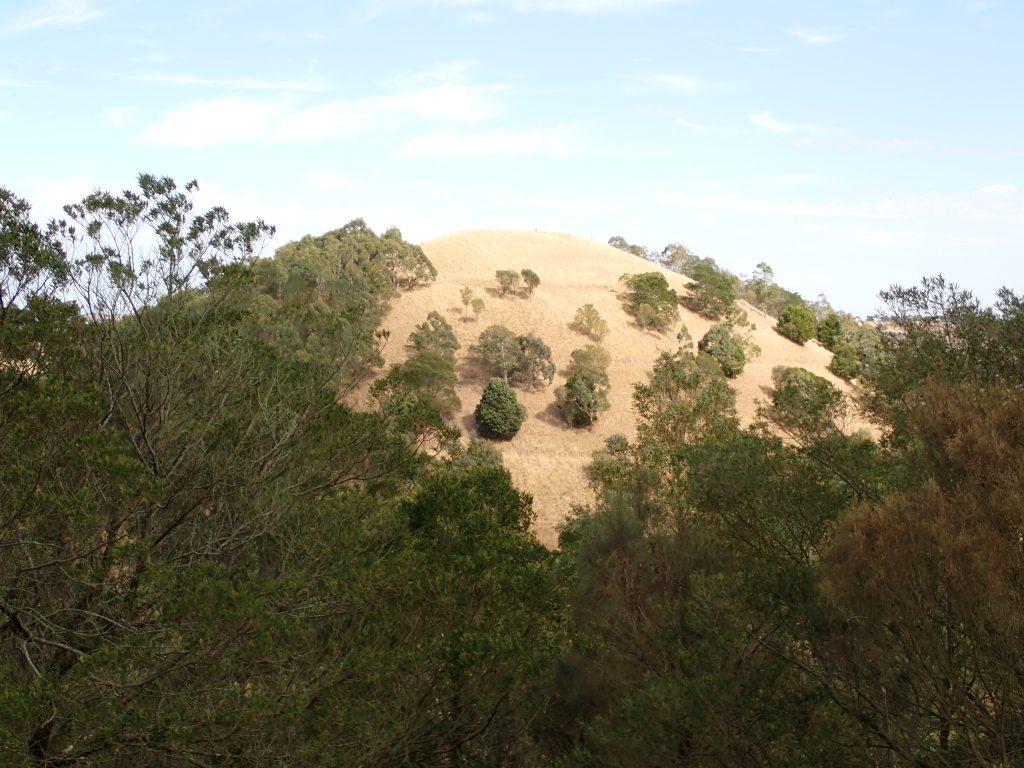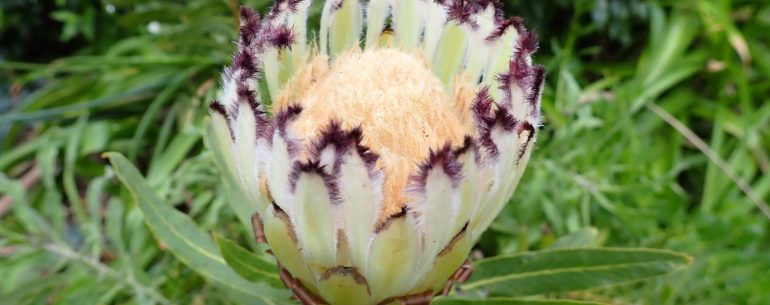The campsite we are staying at is called Lakes and Craters Caravan Park and the clue is in the title …. The area has a lot of lakes and craters … telling us a lot about its volcanic origins. Camperdown is at the centre of a region that was volcanically active between 10,000 and 30,000 years ago – relatively recent in geological terms. Although much of the landscape is flat, this is because it is called a volcanic plain and is part of an area called the Western Victoria Volcanic Plains which extend from Melbourne in the east to Mount Gambier in the west. This is the third largest volcanic plains in the world and over 700 eruption points have been identified. The campsite sits on raised ground in between two of these eruption points!
The eruptions cause features called Maars. These are not the traditional giant conical volcanoes but are instead wide, dish-shaped craters. These are formed by the interaction of the magma and the groundwater. When the two coincide, the result is literally explosive. This produces high pressure steam explosions through rock vents and further eruptions widen the craters more and more. Given their shallow nature, many of them (below the water table) then fill with water and form lakes – hence the name of the caravan park – lakes and craters!
We started walking just outside the caravan park to the Camperdown Botanic Gardens which are adjacent. These were lovely with a considerable amount in flower, even quite late in the season. The area of the park and gardens is also an arboretum so we are parked underneath an old oak tree – definitely not native flora. There is also an excellent lookout just by the botanic gardens and this gives a great view of two of the lakes in craters either side of us. The lake immediately next door – Bullen Merri – is thought to be two maars which have merged together as a result of eruptions.

We then headed to another of the maars – Mount Leura. We parked close to the summit and then walked round a 2 kilometre panoramic trail around the crater. The views were amazing across the plains – dotted with more craters, but this one is particularly unusual in having another peak nearby called Mount Sugarloaf. When this part erupted, scoria fountained out of the crater. Scoria is a dark-coloured volcanic rock and is formed when it is ejected from a volcano in molten form. It then cools in the air forming grains called clasts. During the eruption at Mount Leura, the scoria, for some reason, spouted in just one direction, forming an almost perfect sugarloaf mountain – hence the name Mount Sugarloaf …. This is apparently quite unusual.

We now felt that we had nearly educated ourselves enough about volcanoes, but there was one further thing to learn. What does wine grown in a maar taste like? There was only one way to find out and that was to head to a vineyard in a maar and taste it. So in the name of self-sacrifice and education we did just that and headed to the Keayang maar vineyard. This is just south of Terang and located on the gentle slopes of a maar. The owners were apparently originally dairy farmers who planted some vines wondering whether they would work. It turns out they do …. Well we thought so, though we found that we had to buy some more wine just to check we thought that.
The volcanic soil is apparently particularly suited to a pinot noir grape and so we tried a tasting of various reds (pinot noir and shiraz) and two whites (a chardonnay and viognier). We came away with some pinot noir and viognier – all simply in the name of checking more emphatically that it is as good as we originally thought!

We finished the day with a swim at Lake Bullen Merri – very pleasant apart from a few petrol heads in motor boats, but they weren’t too intrusive ….
